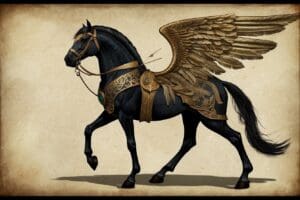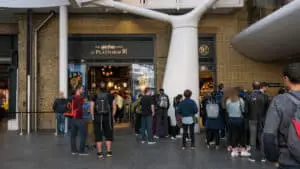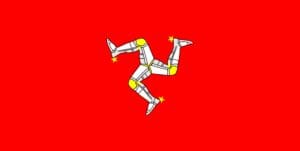Enchanted Canvases: Exploring Folklore’s Role in Irish Contemporary Art
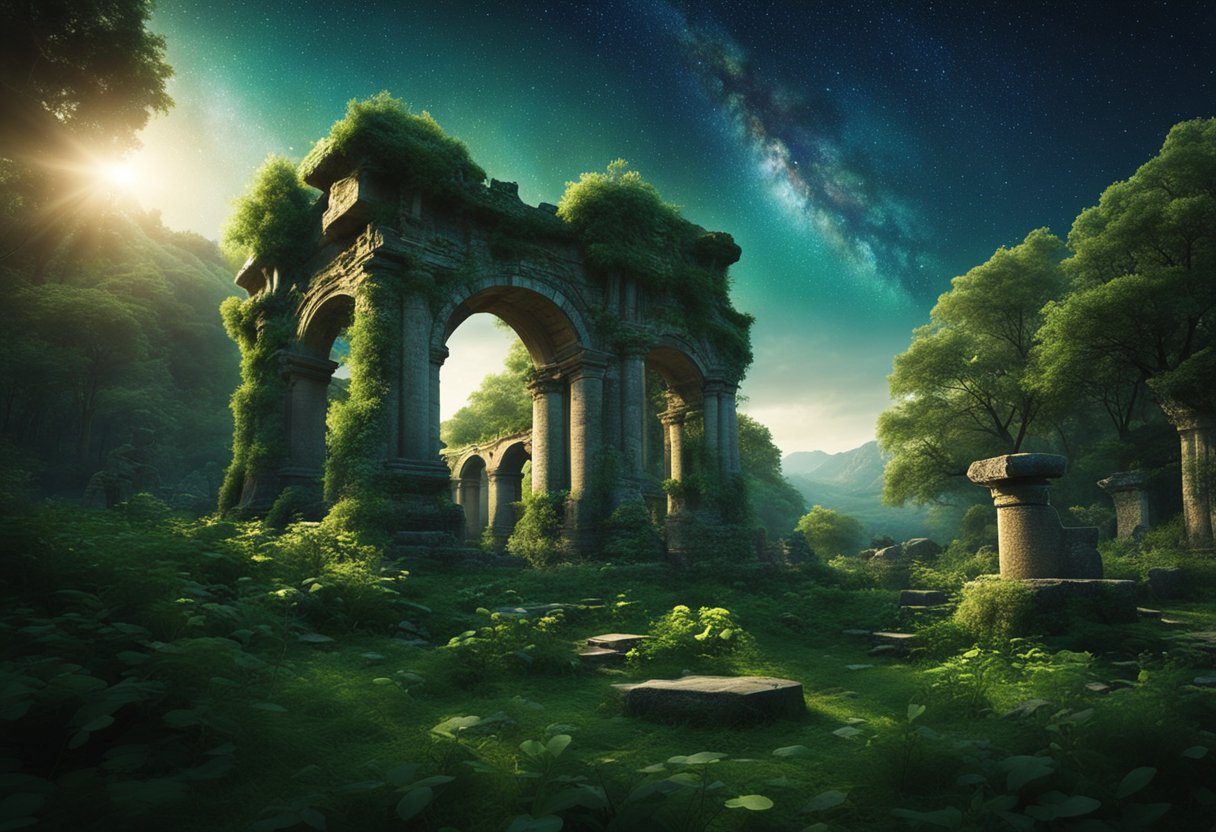
Updated On: April 21, 2024 by Maha Yassin
Irish contemporary art vibrantly weaves the threads of past and present, infusing age-old folklore with modern expression. Our nation’s rich tapestry of myths and legends provides a boundless source of inspiration, shaping the visual narratives that grace galleries and cultural spaces across Ireland. The echo of folklore in art has preserved traditional stories and allowed them to evolve, merging with contemporary themes to create a unique and compelling artistic language.
As artists repurpose folklore to comment on modern society, they rekindle the fires of our cultural identity. The haunted landscapes and folk creatures depicted in their works are refracted through the lens of the current social and political climate. The ordinary becomes extraordinary through a blend of Gothic overtones and uncanny artistry, establishing a dialogue between the familiar and the otherworldly. Evocative of a heritage rooted in storytelling, these artworks ignite conversations about what it means to be Irish in an increasingly complex world.
Historical Context of Irish Folklore
Irish folklore, a vibrant facet of our nation’s cultural tapestry, has its genesis deeply rooted in the historical framework of Ireland. From the mystical narratives of Celtic mythology to the profound influence of Christianity during the Middle Ages, these folkloric elements reflect the interweaving of various cultural threads.
Central to this heritage is the oral tradition. Before the advent of the written word in Ireland, cherished tales and enduring traditions were passed verbally from generation to generation. This oral conveyance acted as the lifeblood of Irish society, safeguarding our cultural wisdom and identity throughout tumultuous periods.
Celtic Mythology was built on the foundation of much Irish folklore. The Tuatha Dé Danann and other legendary figures occupied a significant place in pre-Christian times, their stories permeating the Irish consciousness with themes of heroism, mysticism, and the natural world.
The progression of history witnessed the arrival of Christianity in Ireland, a transformational period where pagan beliefs gradually fused with Christian teachings. Saints like St. Patrick became enmeshed in the folklore, symbolising this synthesis of beliefs.
The Middle Ages marked a pivotal era for our folklore’s preservation. Monastic scholars began transcribing oral tales into manuscripts, delicately interlacing them with Christian motifs. These texts became a bedrock for understanding our past and the societal norms of those eras.
By appreciating the historical context of Irish folklore, we gain insights into a remarkable past that inspires our art and storytelling today. The enchanted canvases of contemporary Irish artists do not just capture the imagination; they are a homage to our nation’s resilient spirit and rich history.
The Evolution of Folk Influences in Art
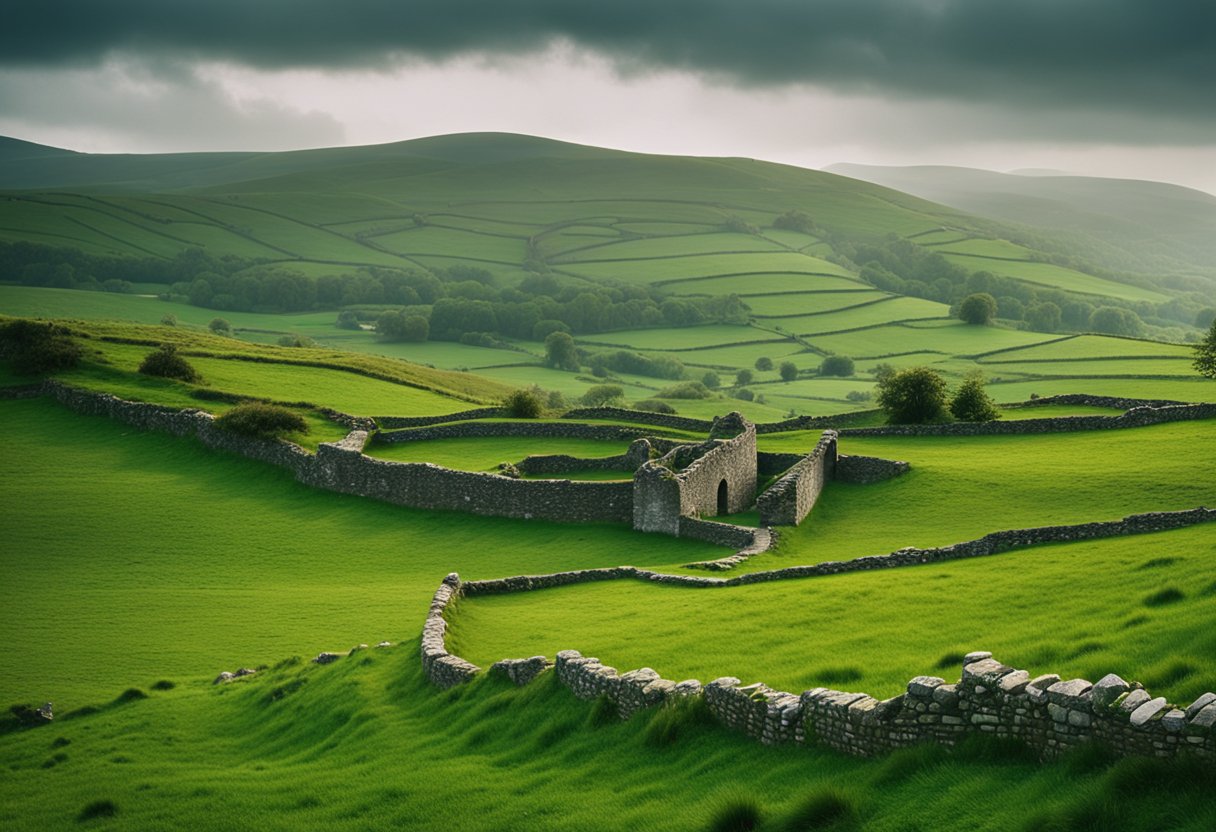
Folk art, emerging from the depths of tradition and culture, continues to influence contemporary Irish art. As we trace history, we find that folk influences have evolved significantly, interweaving with modernity while preserving the essence of our cultural identity.
Initially, folk art was intrinsically linked with daily life, rituals, and community practices. It was an aesthetic endeavour and a visual language steeped in local tradition. The transformation of these art forms over time has led to their integration into the wider sphere of visual culture. Artists have adopted age-old motifs and methods, reinterpreting them within a contemporary context to resonate with modern audiences.
The transition from tradition to modernity in Irish art is vivid. In the early days, it mainly served functional or symbolic purposes, often created by untrained hands. While often academically trained, today’s artists still draw upon a cultural wellspring that imparts a distinctly Irish character to their work.
- Early folk influences: utilitarian objects, woven textiles
- Modern interpretation: abstract motifs, digital mediums
One cannot overlook the role of folk influences in expressing and shaping cultural identity. The symbolism found in ancient Irish folklore continues to inspire our artists, fostering a connection between the past and present.
The evolution of folk influences showcases a vital and adaptive aspect of Irish art—tradition informing innovation, ensuring the enduring legacy of our visual heritage in a rapidly transforming world.
Mythology and Identity in Irish Art
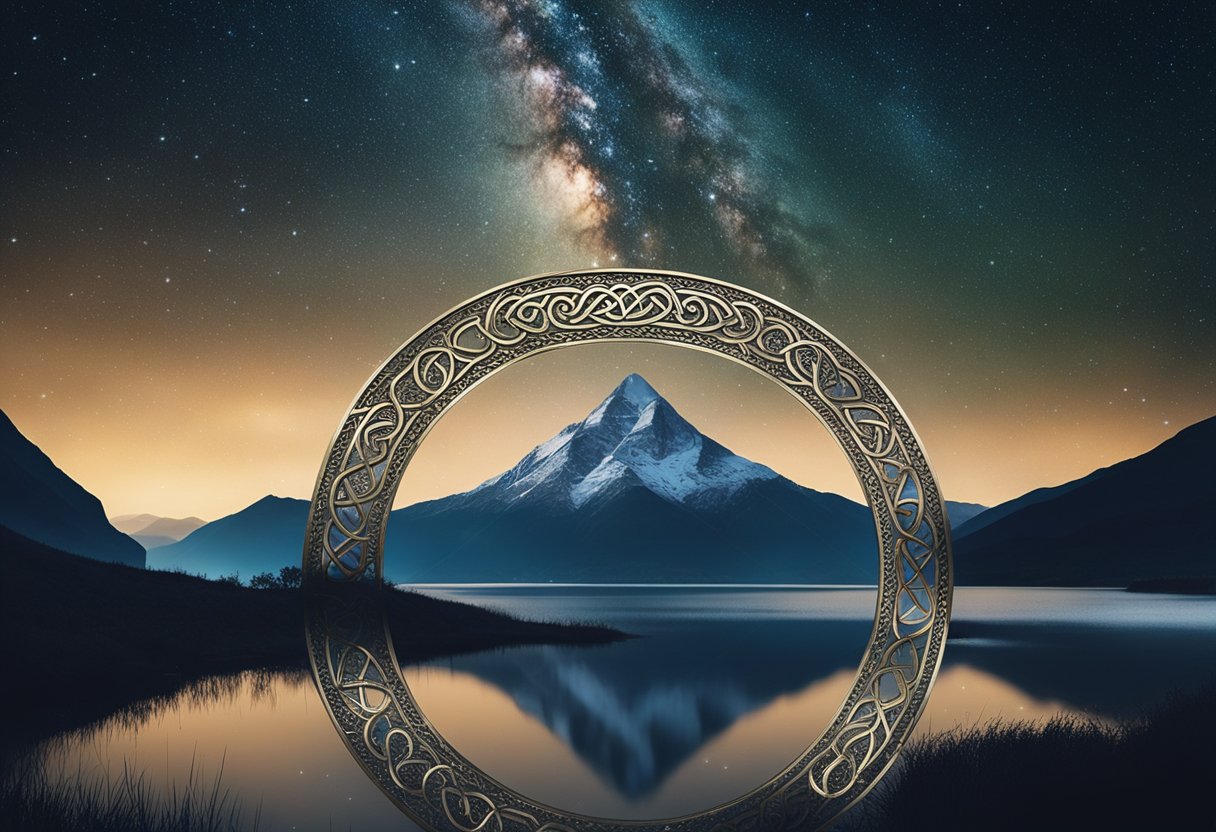
This section explores the intrinsic connection between mythology and identity in Irish contemporary art, revealing how ancient narratives and symbols are reimagined in modern creative expressions.
Myths and their Meanings
Mythology is a tapestry of symbolism deeply woven into the fabric of Irish society. These stories, rich with metaphors of nature and the human condition, resonate with the Irish identity, continuously influencing artists. The intricate tales from the mythological cycles, such as those surrounding the mystical Tuatha Dé Danann, are not just old yarns of the past but serve as foundational elements for contemporary Irish artists to explore themes of existence, natural wonders, and national consciousness within their work.
Heroes and Kings
The portrayal of heroes and kings in Irish art is a testament to their timeless allure and how they personify the virtues and complexities of human nature. Characters like Cú Chulainn and King Brian Boru become allegorical figures in paintings and sculptures, encapsulating the courage and tragedy that is so often associated with Irish history and myth. Modern art pieces capturing these protagonists highlight the dialogue between the historical and the contemporary, often drawing parallel lines between past legends and present realities.
Deities and the Otherworld
The beings of the Otherworld, the deities of old, cast long shadows over Irish art, their stories foregrounding themes of divinity, otherness, and the ethereal. Artworks that delve into the domain of the supernatural often portray a surreal, liminal space where imagination mirrors the enigma of the Otherworld. Through such representations, artists comment on the otherness within ourselves and our society, using these ancient figures to explore spirituality, morality, and the unknown depths of our collective psyche.
Folklore and Irish Contemporary Art
In Ireland, the rich tapestry of folklore continues interweaving with contemporary society’s fabric. Its presence is more than a quaint remnant of the past; it is a vibrant force influencing beliefs, oral traditions, and social norms. Contemporary Ireland, while modern in many respects, still nurtures a connection to its mythical roots, reflecting a national identity deeply entwined with legendary narratives.
Society today often revisits these stories, drawing from them for creative inspiration. Artists incorporate folklore into their works not simply as a homage but as a commentary on current issues, exploring themes such as identity, politics, and societal change. For instance, home is depicted as uncanny within certain art practices, echoing folkloric undertones.
Oral traditions, once the primary means of sustaining Irish folklore, now coexist with digital media, ensuring these tales evolve and proliferate. They provide a narrative continuity that grants cultural cohesiveness, allowing society to reflect upon its collective journey.
As traditions adapt, so does their role in politics and community life. Folklore often serves as a symbolic backdrop during political discourse, reminding us of shared morals and the need to preserve cultural uniqueness amidst globalisation.
In essence, we see Ireland’s animated folklore living harmoniously with modernity, confirming that rather than obsolete, these enduring stories are a testament to the resilience of culture in contemporary settings.
Artistic Representation of Folk Creatures

In the vibrant tapestry of Irish contemporary art, the representation of folk creatures plays a pivotal role. These entities, deeply ingrained in Irish folklore, offer rich inspiration to artists.
The Banshee, often illustrated as a wailing woman, embodies a forewarning of death. Artists depict her in various forms, from a mournful figure to a more abstract embodiment of sound and emotion.
Fairies and elves are frequently portrayed with an ethereal beauty, carrying the charisma and charm of Ireland’s ancient woodlands and meadows. These delicate beings are shown as custodians of nature, with their representation ranging from detailed figurative work to free-form interpretations.
Visions of leprechauns capture the imagination with their mischievous antics. Typically, these small, bearded men are clothed in green coats and hats, often cobbling shoes and hoarding their coveted pots of gold.
The mythical seals that transform into humans are depicted in art with a sense of tragic romance, echoing the folklore tales of love and loss between selkies and humans.
Artworks featuring changelings explore themes of transformation and identity, focusing on the narrative of fairies exchanging their offspring with human children.
Lastly, the visual representation of mythical creatures provides a wealth of creative exploration, with artists interpreting each creature in unique and thought-provoking ways.
Our artistic community continues to explore these legendary figures, ensuring the survival and evolution of Irish lore within the canvas’s confines.
Symbolism and Metaphor in Irish Art
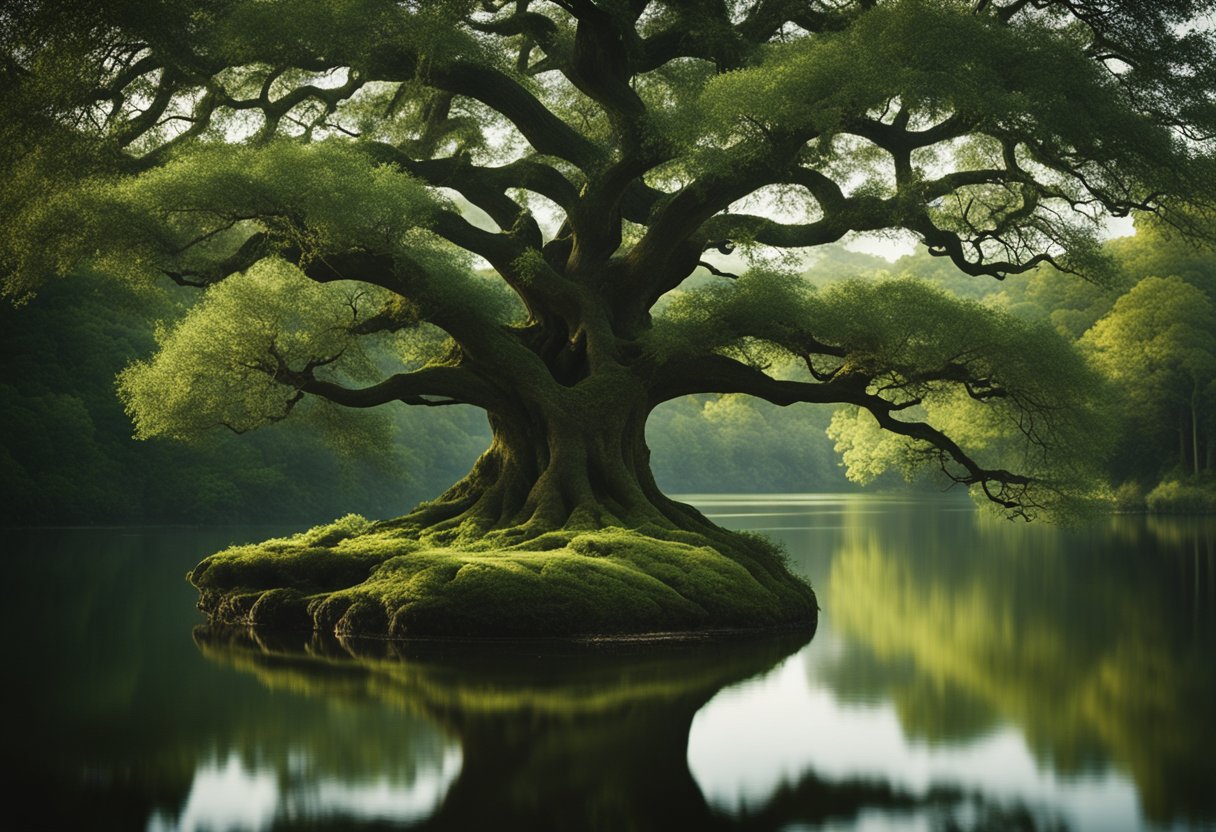
In Irish contemporary art, we observe a rich tapestry of symbolism and metaphor, both serving as narrators of cultural narratives and carriers of morality and love. Using symbols such as the shamrock or Claddagh ring transcends simple aesthetics, embedding deep moral lessons within the canvas.
Motifs drawn from Celtic tradition, such as the tri-spiral, have become contemporary pieces. These spirals are more than mere decorations; they resonate with the theme of eternal life, a concept deeply rooted in Irish mythology.
- Shamrock: Often embodies the essence of Irish identity and spirituality.
- Claddagh Ring: Represents love (heart), loyalty (crown), and friendship (hands).
- Brigid’s Cross: A symbol of protection and a metaphor for intertwining the spiritual and temporal.
Artists weave these elements, blending traditional Irish folklore with contemporary experiences. For instance, the iteration of the shamrock in modern art depicts a respect for the natural world and a recognition of Ireland’s cultural heritage.
In addition, incorporating creatures like the Banshee references the profound connection between Irish folklore and the supernatural. Through the haunting image of the Banshee, artists convey the metaphoric message of transition and the inevitable nature of change.
Distinctive and powerful, these symbols and metaphors in our art serve as a bridge, connecting past to present, the mystical to the mundane, and capturing the enduring spirit of Ireland.
Reviving Tradition Through Dance and Music
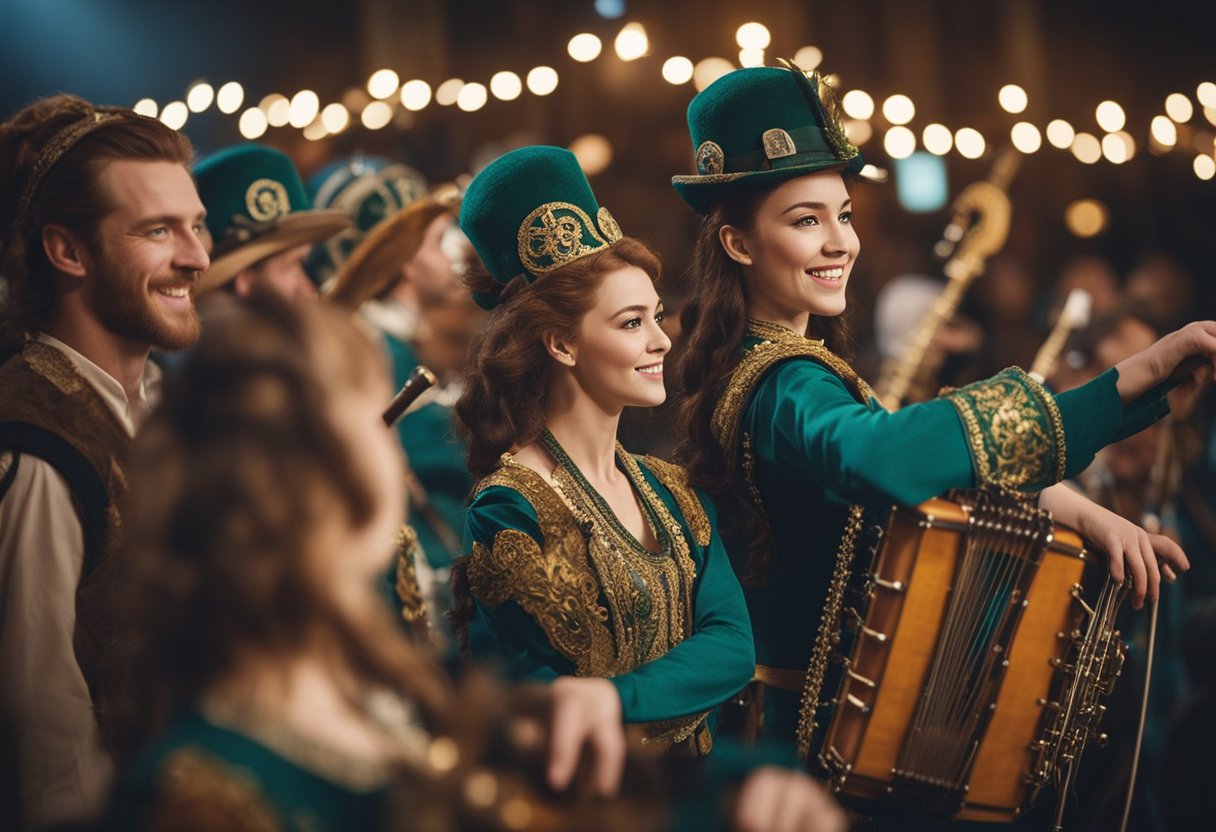
In our artistic journey, we encounter a profound revival of tradition through Irish dance and music, which remains a vital component of Ireland’s contemporary art scene. This revival is not just about looking back; it brings age-old traditions to new audiences, blending time-honoured skills with modern creativity.
Dance in Ireland has always been more than just movement; it’s a storytelling medium imbued with wit and communal spirit. Our artists infuse traditional Irish dance with contemporary influences, ensuring its evolution. It’s a celebration of rhythm and preciseness, where each leap and turn is a testament to the dancer’s skill.
Similarly, music has a role that is just as pivotal. Traditional Irish tunes have transcended time, evolving while retaining the essence of the culture. Musicians today are drawing from this deep well, composing pieces that honour the past while adding a fresh, vibrant sound.
- Skill: Both dance and music require exceptional skill, a blend of precision and emotion honed through years of practice.
- Movement: In dance, every gesture and step carries the weight of tradition, yet artists constantly find new ways to express and innovate within this framework.
- Tradition: We understand that innovation lacks depth without a strong grasp of tradition. Therefore, we ensure that our foundational practices in dance and music are well-preserved and respected.
Artists in our communities thrive on these elements, leading to a rich tapestry of performances that engage and inspire. By honouring and advancing our cultural heritage, we keep the spirit of Ireland’s folklore vibrantly alive in the modern world.
Cultural and Artistic Resistance
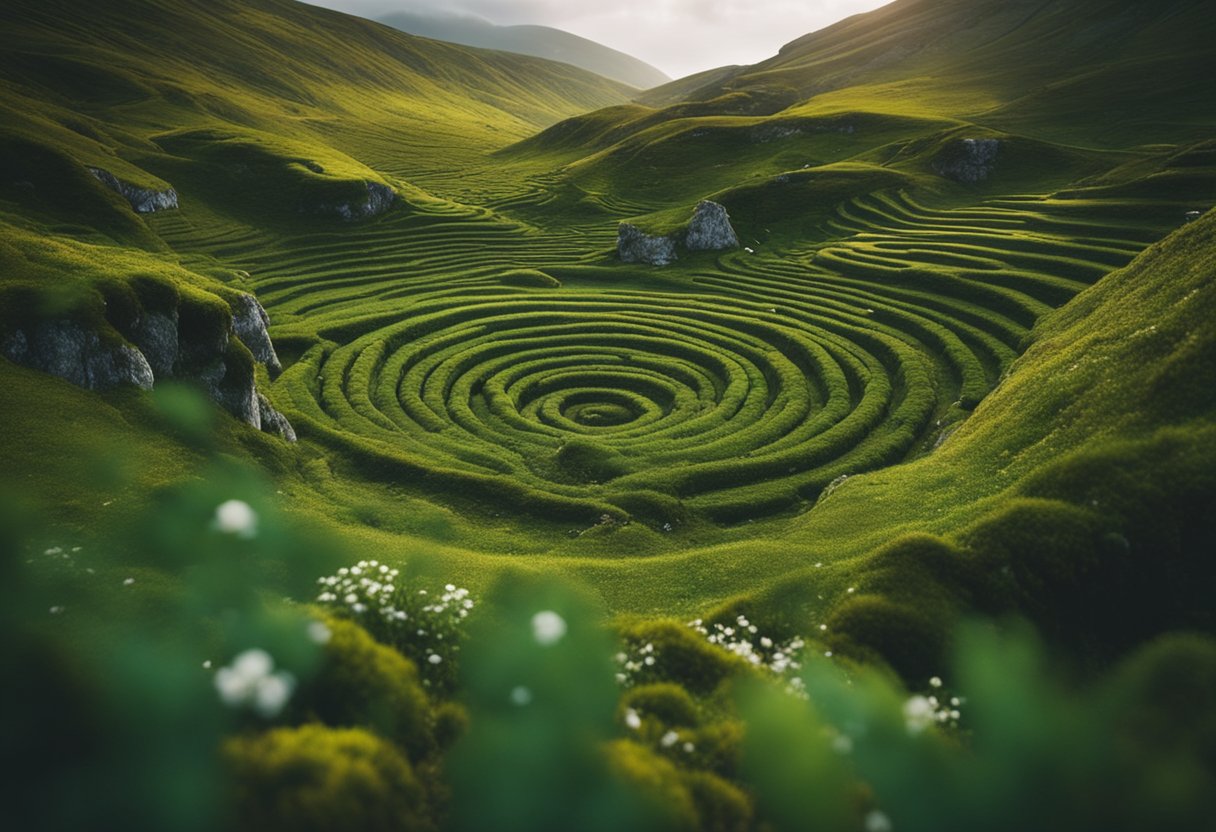
We witness a powerful dialogue of cultural and artistic resistance in our exploration of Irish contemporary art. Across the contested spaces of Ireland’s societal landscape, artists have harnessed visual mediums to challenge and engage with issues at the heart of identity politics and alterity.
- Resistance: Embedded within the visual narratives, resistance serves as a cornerstone, challenging societal norms and promoting introspection.
- Problematic Aspects of Society: The problematic elements, ranging from historical conflicts to modern-day socio-political divides, are brought to light through compelling compositions.
- Society: By interrogating social constructs, art becomes an echo chamber for the often-unheard voices seeking to reshape their representation and space within society.
- Identity: The reflection on national and individual identity remains a recurring theme, with artists dissecting what it means to be Irish globally.
- Politics: Bereft of overt declarations, sophisticated politicism weaves through each work, inviting viewers to reconsider entrenched political stances.
These facets culminate in artworks that act as cultural preservation, ensuring that the rich tapestry of Ireland’s heritage is not lost but reinterpreted and reinforced for contemporary and future audiences. Through our collective discourse on art, we amplify alterity and support the fight for the reclaimed space within the globally connected fabric of our modern existence.
Contemporary Gothic and Uncanny Artistry
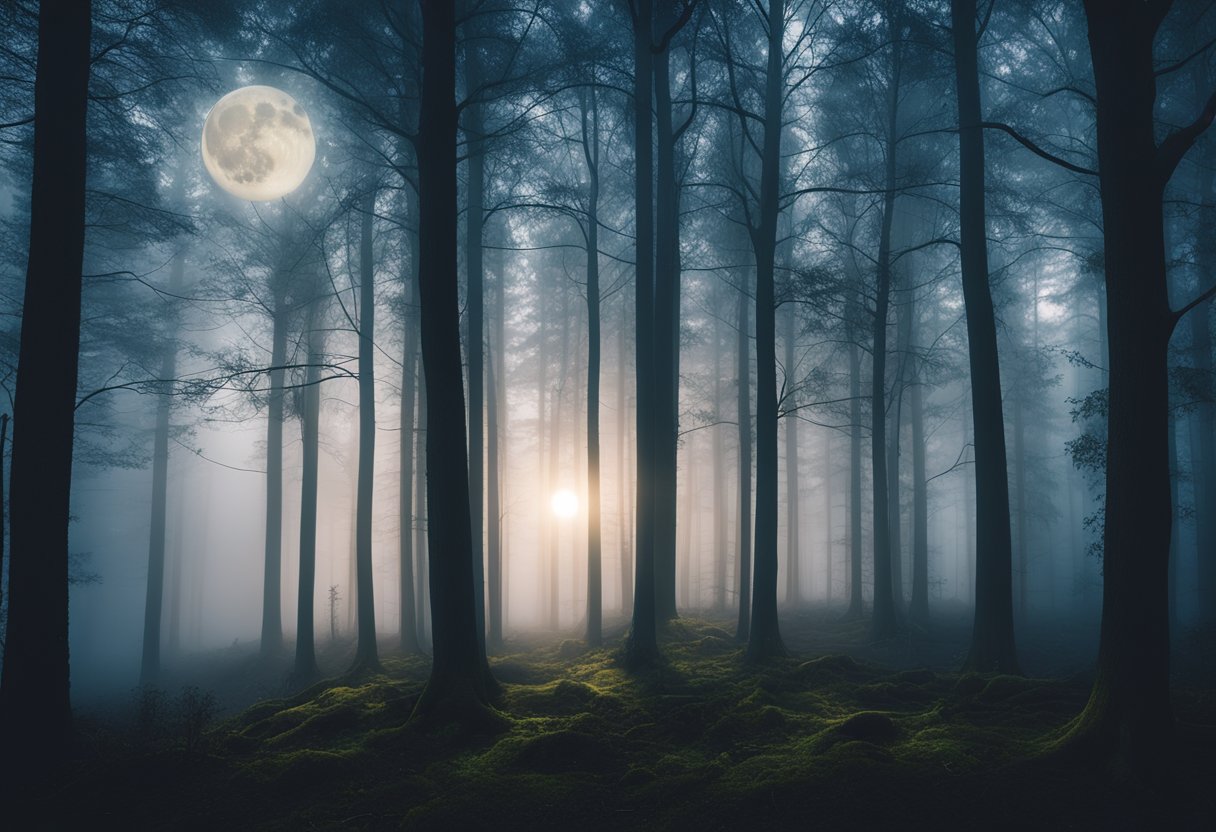
In exploring the realms of contemporary Gothic art, we uncover a landscape riddled with uncanny representations that stir within us a profound sense of anxiety and terror. The following discourse delves into these artistic nuances, anchored deeply in the Gothic tradition yet vibrantly echoing through today’s Irish artistry.
Strange Spaces and Anxieties
Irish contemporary art frequently interrogates the concept of space as a nexus for anxiety. The familiar becomes distorted, projecting strange spaces that evoke an undercurrent of dread. In this juxtaposition of quotidian environments and unsettling elements, anxiety is the pervasive atmosphere brought forth through metaphorical representations that challenge our perceptions of normalcy. It’s in the interplay of light and shadow, of recognisable structures juxtaposed with surreal intrusions, where the inherent strangeness of these spaces grips the observer.
Through these haunted canvases, there’s an evident resonance with the cultural echoes shared in works such as “A Dark Domesticity: Echoes of Folklore in Irish Contemporary Gothic.” Here, the artists pull at the threads of folklore, wrapping the familiar in a tapestry of the spectral and the unknown, compelling us to confront our collective unease.
Unheimlich and the Home
Our homes are traditionally seen as sanctuaries, but this sense of safety is subverted in the realm of the uncanny or unheimlich. The home becomes a room where terror lurks in the mundane, transforming domesticity into a canvas for the surreal. Unheimlich art exposes the home’s dual nature—a place of comfort that can, at the slightest shift in perspective, turn into an unsettling backdrop for the imagination’s darker flights.
This exploration of the uncanny within the domestic space can unsettle and provoke, as highlighted by the literary and fine art interpretations in Irish Gothic works. Such expressions serve not only to disturb but also to reflect on deeper societal anxieties, using the home as a metaphorical vessel to navigate the complex currents of contemporary life.
Artists tactfully utilise the concept of the home as a site of psychological tension, revealing how its walls, once thought to shelter, can also confine—encapsulating a myriad of untold stories that can fascinate and disquiet us.
The Influence of Technology and Modernity on Folk Art
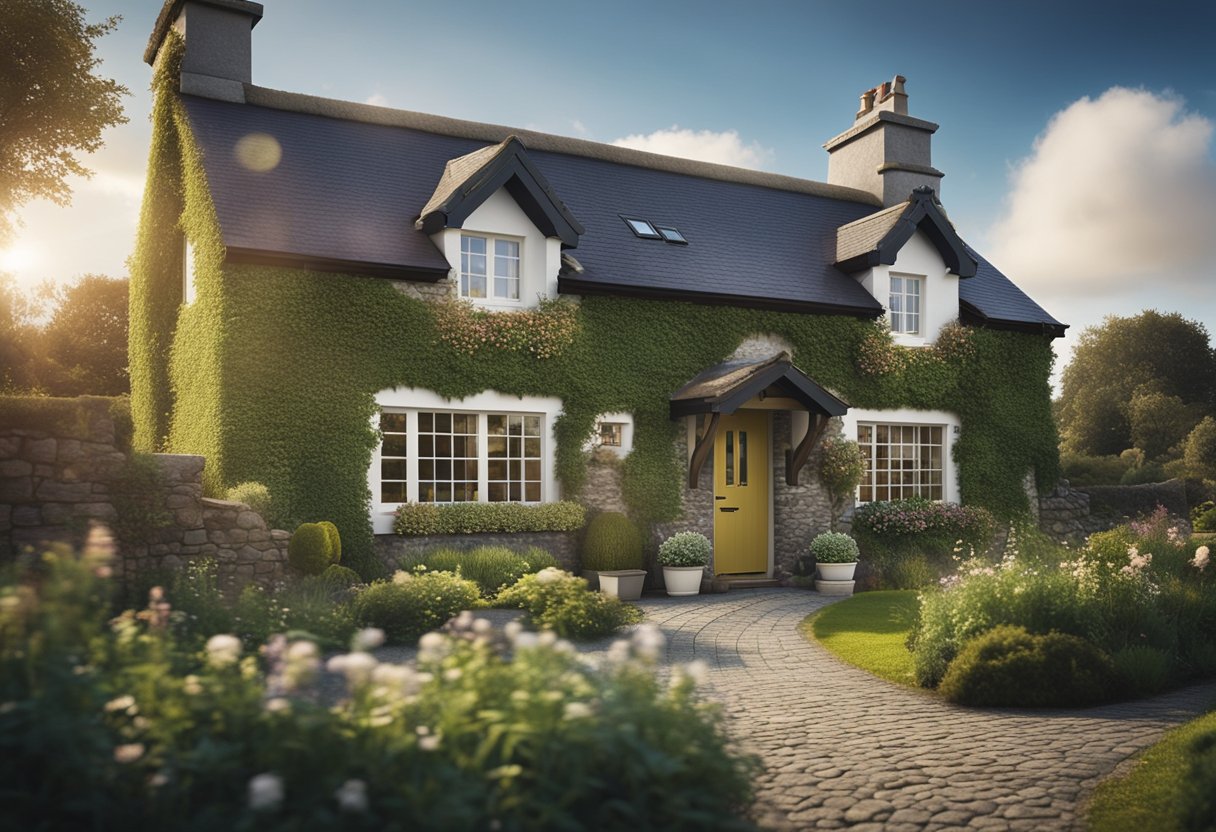
In our fast-paced world, technology and modernity significantly impact folk art. Technology has infused folk traditions with new possibilities, amplifying the imagination and reach of artisans. With advanced tools and platforms, artists now transpose the essence of folklore into digital formats, ensuring the survival and evolution of cultural narratives.
Modernity has ushered in a blend of contemporary themes with age-old motifs. As a result, depictions of seanchaí—the traditional Irish storytellers—might now be seen through a modern lens, their tales interwoven with current realities. The wisdom preserved by these guardians of folklore transcends time, with their stories finding expression in new media.
The following points highlight the exchange between folk art and modern influences:
- Technological tools allow for the preservation and dissemination of traditional rituals and stories.
- Social media and online galleries provide global platforms where folk artists can showcase their works, blending tradition with contemporary styles.
- Modern materials and techniques inspire artists to reinterpret traditional motifs, enriching the folk art landscape with innovative textures and forms.
Our engagement with technology does not just modernise the expression of folk art; it also redefines the bounds of community and kinship within which these arts are practised. We see an interplay of past and present, where electronic devices serve as the new hearth around which we gather to share tales of old. Thus, rather than eroding the folklore fabric, modernity and technology stitch it with new threads, expanding its relevance and resonance.
Notable Irish Artists and Their Works
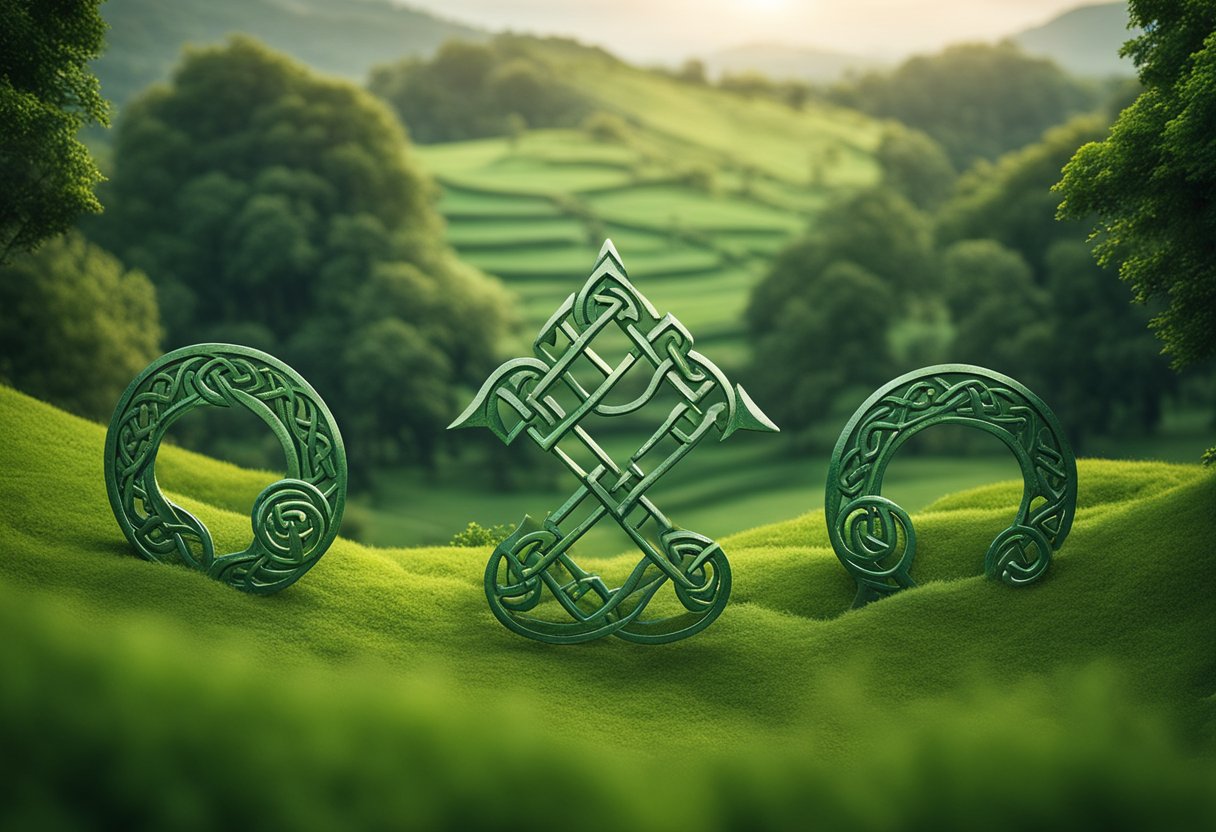
We’ve observed the captivating impact of folklore in the art of several contemporary Irish artists. These creators draw upon legends and myths, weaving the mystical threads of Ireland’s past into modern narratives. Here, we touch upon some of these artists and their renowned works.
Alice Maher is known for her thought-provoking pieces that evoke the wildness and myth of natural Ireland. Her work often features organic materials closely linked with Irish folklore narratives. Consider her piece Bee Dress, where the intersection of nature and the human form is evident.
Rita Duffy is another artist whose work often examines cultural and historical dimensions focusing on social commentary. Her artwork, rooted in storytelling, acts as a visual narrative of Ireland’s complex history.
The world of Michael Fortune reflects a deep engagement with folklore and the everyday lives of rural communities. One can witness his fascination with stories and local traditions through his film and photography projects.
Aideen Barry brings a sense of the eerie and surreal to her art, capturing the transcendental and the uncanny. Her multimedia installations effectively channel elements of Irish folklore narratives into contemporary art.
Martina Cleary works primarily with photography and video art, imbuing her pieces with an inquiry into memory and identity. Her pieces often resonate with the ethos of traditional Irish storytelling.
Lastly, Anthony Haughey’s art confronts issues of identity and belonging, delving into Ireland’s landscapes of history and memory. His work can be seen as a dialogue with Irish heritage, sometimes in the form of hauntingly poignant photographs.
Each artist contributes uniquely to the rich tapestry of Irish contemporary art, where folklore’s enduring presence inspires and provokes thought.
Frequently Asked Questions
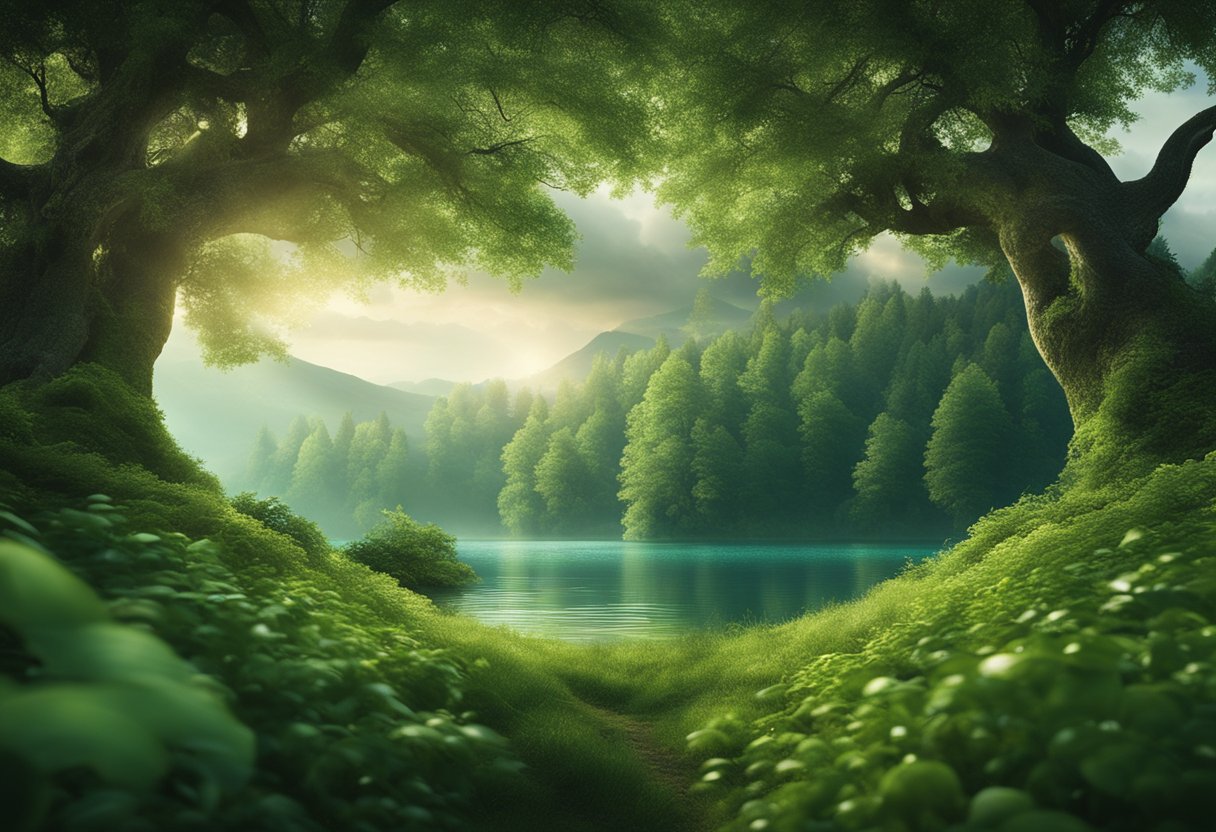
In this section, we explore some of the most commonly asked questions about Enchanted Canvases: the influence of Irish folklore on contemporary Irish art.
Who are some prominent Irish artists who incorporate folklore into their work?
Irish artists like Jim Fitzpatrick and Harry Clarke are known for weaving folklore into their art, captivating audiences with visuals that echo ancient tales and myths.
How does Irish folklore influence contemporary Irish art?
Contemporary Irish art often draws inspiration from mythology, infusing work with symbolic elements that reflect Ireland’s cultural identity and heritage, much like the storytelling traditions celebrated at the Irish Centre.
What are the key characteristics of Irish artwork inspired by traditional stories?
Key patterns, knotwork, and vibrant colours are typical in Irish artwork that mirrors folklore, reflecting a connection to nature and the spiritual world as noted by sources like Art in Context.
Which famous works of art exemplify the integration of Irish folklore into modern creativity?
Harry Clarke’s stained glass works and Jim Fitzpatrick’s iconic illustrations, such as his renowned depiction of Cú Chulainn, are quintessential examples of folklore’s influence on contemporary creations.
How do contemporary Irish artists interpret traditional folklore themes?
Artists interpret traditional themes through various lenses, sometimes maintaining fidelity to the source and reimagining stories to reflect modern values and concerns.
In what ways has Irish folklore been represented in visual arts within the contemporary period?
In visual arts, Irish folklore has been represented through diverse media, including painting, sculpture, and digital art, often highlighting themes of nature, heroism, and the supernatural.


